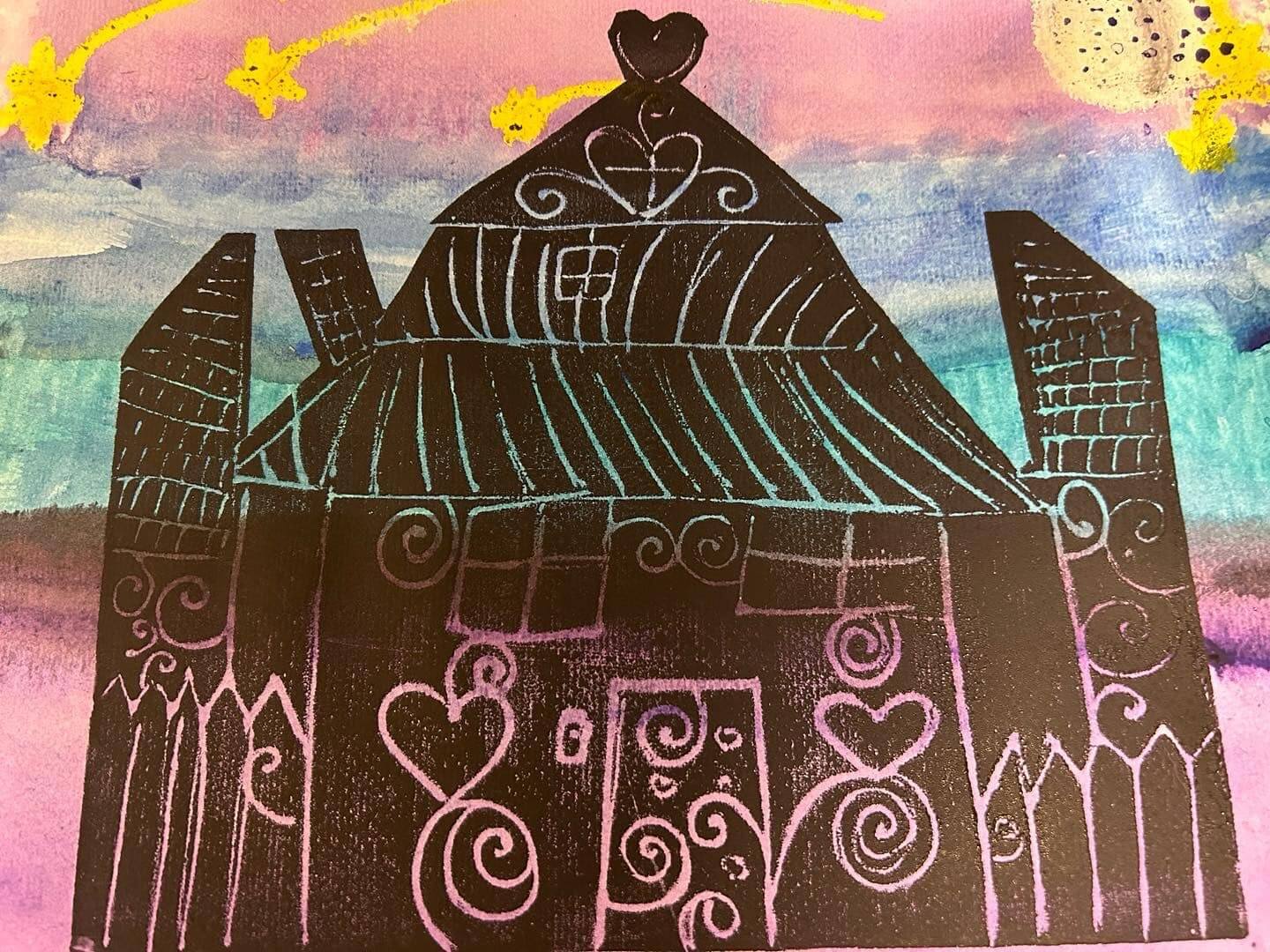
Young Artists in the Spotlight: Allie Kazan and the Magic Mansion
Check out this artwork by students at Orange County Academy......
Learn MoreOrlando Family Stage
The Finest in Family Theater
5/4/2021
Nathan Tanner Stout
The John F. Kennedy Center for the Performing Arts defines arts integration as “an approach to teaching in which students construct and demonstrate understanding through and art form.” In this approach, “Students engage in a creative process which connects an art form and another subject area and meets evolving objectives in both.” For those of us who believe in the power of theatre in students’ lives, arts integration seems like a no-brainer. It’s a way that theatre can find its way into a school curriculum dominated by other subjects, thus reaching more students. At the same time, it can boost student engagement: one study found that students who experienced arts-integrated learning were 25% more engaged in the lesson than the control group.
But why does it work? Why bother with arts integration? Even if you don’t have these questions, someone is bound to ask them. Here are a couple of responses:
Arts integration can help build 21st century skills.
The late Sir Ken Robinson, author and professor of Arts Education at the University of Warwick in England wrote “We need new structures of learning for a different type of future. We cannot meet the challenges of the 21st century with the educational ideologies of the 19th… We need an education that values different modes of intelligence and sees relationships between disciplines.” Others too in education have reached this conclusion, promoting the identification of skills critical to student success in the future. While no unified list of skills exists, The Partnership for 21st Century Skills which is composed of hundreds of institutions across over 30 states organizes them into 4 categories:
Does theatre help students learn these skills? Absolutely. It asks us to be creative in our interpretations, to collaborate with other artists in our creation, to think critically in a way activated by our bodies, and to communicate with an audience and each other. And these outcomes aren’t relegated to studying theatre as a core subject. By using the art of theatre to teach other subjects, we allow students opportunities to glean skills from both while preparing them for thinking through things creatively in a world where innovation is increasingly in demand.
Arts integration can teach subjects in a way that deepens their level of learning
In 1948, Benjamin Bloom, at the request of the American Psychological Association, chaired a committee which began to classify education goals. Eight years later, the committee published the Taxonomy of Education Objectives. Now known as Bloom’s taxonomy, this framework conceives of increasing levels of educational objectives for students as a pyramid, with memory at the very bottom and creation at the very top.
Source: Vanderbuilt University Center for Teaching
So, in order for students to deeply learn something and be able to use that knowledge, teachers need to use educational strategies that ask students to apply their knowledge in new situations, draw connections between fields of knowledge, and build on that knowledge through creating new ideas, new work. Integrating theatre as part of that system of teaching accomplishes can accomplish all of those objectives.
But why use theatre and the arts as a method? There are other ways to structure teaching that allow students to achieve deep learning objectives. There are other ways to teach 21st century skills. Why both with arts integration at all?
Well…
Teachers are happier and more innovative when using arts integration
It is no secret that teaching is not an easy profession – especially this past year. If there were something that teachers could do in order to enjoy their jobs more, it would be worth it, right? A study of teachers in the Integrated Teaching Through the Arts M.Ed. program at Lesley University (pdf link here) found that arts integration renewed teachers’ commitment to teaching. Teachers in this study by the Center for Applied Research and Educational Improvement at the University of Minnesota reported that arts integration re-energized their approach to teaching, and teachers. An evaluation of the Kennedy Center’s Changing Education for the Arts program by George Mason University (pdf link here) found that arts integration “increased teacher collaboration within and across grade levels as well as content areas, which [had] a positive influence on the schools’ culture.” These and other reports affirm that arts integration has had a positive effect on teachers. They also recognize the resources required to implement arts integration. Professional development, buy-in from teachers, and support from school districts are all required.
If any of those reasons convinced you that arts integration is valuable, great! We hope you’ll have opportunities to find more reasons as you or a student in your life gets the opportunity to learn through theatre and the arts, opening doors of knowledge and experience that would otherwise be closed.
————————————-
If you are a teacher or principal who wants to learn more about implementing arts integration in your classrooms, Orlando Family Stage offers arts integration experiences regularly through
Don't miss out on the magic. Grab your tickets now and
make unforgettable memories at Orlando Family Stage!